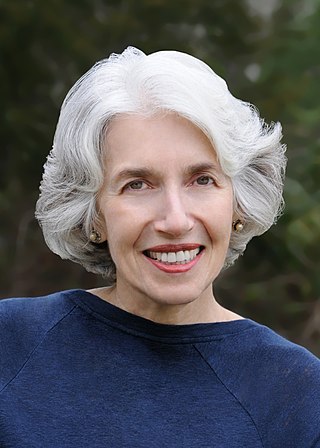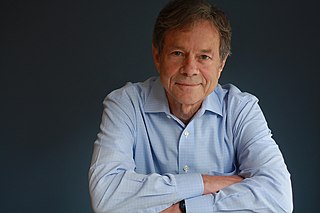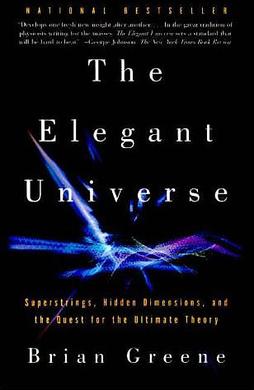Related Research Articles

Dava Sobel is an American writer of popular expositions of scientific topics. Her books include Longitude, about English clockmaker John Harrison; Galileo's Daughter, about Galileo's daughter Maria Celeste; and The Glass Universe: How the Ladies of the Harvard Observatory Took the Measure of the Stars about the Harvard Computers.

Riccardo Giacconi was an Italian-American Nobel Prize-winning astrophysicist who laid down the foundations of X-ray astronomy. He was a professor at the Johns Hopkins University.

Alan Paige Lightman is an American physicist, writer, and social entrepreneur. He has served on the faculties of Harvard University and Massachusetts Institute of Technology (MIT) and is currently a professor of the practice of the humanities at MIT.

Michio Kaku is an American physicist, science communicator, futurologist, and writer of popular-science. He is a professor of theoretical physics at the City College of New York and the CUNY Graduate Center. Kaku is the author of several books about physics and related topics and has made frequent appearances on radio, television, and film. He is also a regular contributor to his own blog, as well as other popular media outlets. For his efforts to bridge science and science fiction, he is a 2021 Sir Arthur Clarke Lifetime Achievement Awardee.

Brian Randolph Greene is an American physicist known for his research on string theory. He is a professor of physics and mathematics at Columbia University, director of its center for theoretical physics, and the chairman of the World Science Festival, which he co-founded in 2008. Greene co-discovered mirror symmetry, relating two different Calabi–Yau manifolds. He also described the flop transition, a mild form of topology change, and the conifold transition, a more severe transformation of space, showing that topology can smoothly change in string theory.

The Elegant Universe: Superstrings, Hidden Dimensions, and the Quest for the Ultimate Theory is a book by Brian Greene published in 1999, which introduces string and superstring theory, and provides a comprehensive though non-technical assessment of the theory and some of its shortcomings. In 2000, it won the Royal Society Prize for Science Books and was a finalist for the Pulitzer Prize for General Nonfiction. A new edition was released in 2003, with an updated preface.

John David Barrow was an English cosmologist, theoretical physicist, and mathematician. He served as Gresham Professor of Geometry at Gresham College from 2008 to 2011. Barrow was also a writer of popular science and an amateur playwright.

Physics World is the membership magazine of the Institute of Physics, one of the largest physical societies in the world. It is an international monthly magazine covering all areas of physics, pure and applied, and is aimed at physicists in research, industry, physics outreach, and education worldwide.

Cosmology is a branch of physics and metaphysics dealing with the nature of the universe, the cosmos. The term cosmology was first used in English in 1656 in Thomas Blount's Glossographia, and in 1731 taken up in Latin by German philosopher Christian Wolff in Cosmologia Generalis. Religious or mythological cosmology is a body of beliefs based on mythological, religious, and esoteric literature and traditions of creation myths and eschatology. In the science of astronomy, cosmology is concerned with the study of the chronology of the universe.

Deborah Leigh Blum is an American science journalist and the director of the Knight Science Journalism program at the Massachusetts Institute of Technology. She is the author of several books, including The Poisoner's Handbook (2010) and The Poison Squad (2018), and has been a columnist for The New York Times and a blogger, via her blog titled Elemental, for Wired.
John M. Crewdson is an American journalist. He won a Pulitzer Prize for The New York Times, where he worked for 12 years. He subsequently spent 26 years in a variety of positions at the Chicago Tribune.
John Peter Huchra was an American astronomer and professor. He was the Vice Provost for Research Policy at Harvard University and a Professor of Astronomy at the Center for Astrophysics | Harvard & Smithsonian. He was also a former chair of the United States National Committee for the International Astronomical Union. and past president of the American Astronomical Society.

Robert P. Kirshner is an American astronomer, Chief Program Officer for Science for the Gordon and Betty Moore Foundation, and the Clownes Research Professor of Science at Harvard University. Kirshner has worked in several areas of astronomy including the physics of supernovae, supernova remnants, the large-scale structure of the cosmos, and the use of supernovae to measure the expansion of the universe.
R. Jeffrey Smith is a managing director of RosettiStarr LLC, a corporate security and intelligence firm, where he leads investigative work and conducts corporate risk analysis for attorneys, management teams, and investors worldwide. Its clients include corporate enterprises with global operations major private equity firms and hedge funds with a combined $650 billion in assets under management. He joined Rosetti Starr in November 2021.

Paul Halpern is an American author and professor of physics at Saint Joseph's University in Philadelphia.
Eric J. Chaisson is an American astrophysicist known for his research, teaching, and writing on the interdisciplinary science of cosmic evolution. He is a member of the Center for Astrophysics | Harvard & Smithsonian, teaches natural science at Harvard University and is an elected Fellow of the American Association for the Advancement of Science.
Cosmic Variance was a collaborative weblog discussing physics, astrophysics, and other topics, written by JoAnne Hewett, Mark Trodden, Sean Carroll, Risa Wechsler, Julianne Dalcanton, Clifford Johnson, John Conway, and Daniel Holz. It was the successor to Carroll's earlier blog Preposterous Universe, which began in early 2004 and ran through much of 2005. The blog's name came from the cosmology concept of cosmic variance.

The American Institute of Physics (AIP) instituted their Science Writing Award to "promote effective science communication in print and broadcast media in order to improve the general public's appreciation of physics, astronomy, and allied science fields." The winner receives $3000, and an engraved Windsor chair. The award is given in three broad categories: 1) science writing, 2) work intended for children, and 3) work done in new media. The AIP stopped issuing awards to three categories: 1) work by a professional journalist 2) work by a scientist, and 3) broadcast media
Andrew E. Lange was an astrophysicist and Goldberger Professor of Physics at the California Institute of Technology in Pasadena, California. Lange came to Caltech in 1993 and was most recently the chair of the Division of Physics, Mathematics and Astronomy. Caltech's president Jean-Lou Chameau called him "a truly great physicist and astronomer who had made seminal discoveries in observational cosmology".

The 4 Percent Universe: Dark Matter, Dark Energy, and the Race to Discover the Rest of Reality is a nonfiction book by writer and professor Richard Panek and published by Houghton Mifflin Harcourt on January 10, 2011.
References
- ↑ Overbye, Dennis (January 26, 2021). "Did an Alien Life-Form Do a Drive-By of Our Solar System in 2017?" . The New York Times. Retrieved January 26, 2021.
- ↑ Gerrard, Nicci (May 13, 2001). "A genius - but you wouldn't want to marry him". The Observer . Retrieved April 3, 2010.
- ↑ "2014 Pulitzer Prize Winners in Journalism, Letters, Drama and Music". The New York Times. April 14, 2014.
- ↑ Overbye, Dennis (December 20, 2024). "Dennis Overbye on Retiring from The New York Times: A Solstice of the Soul". The New York Times. Retrieved December 20, 2024.